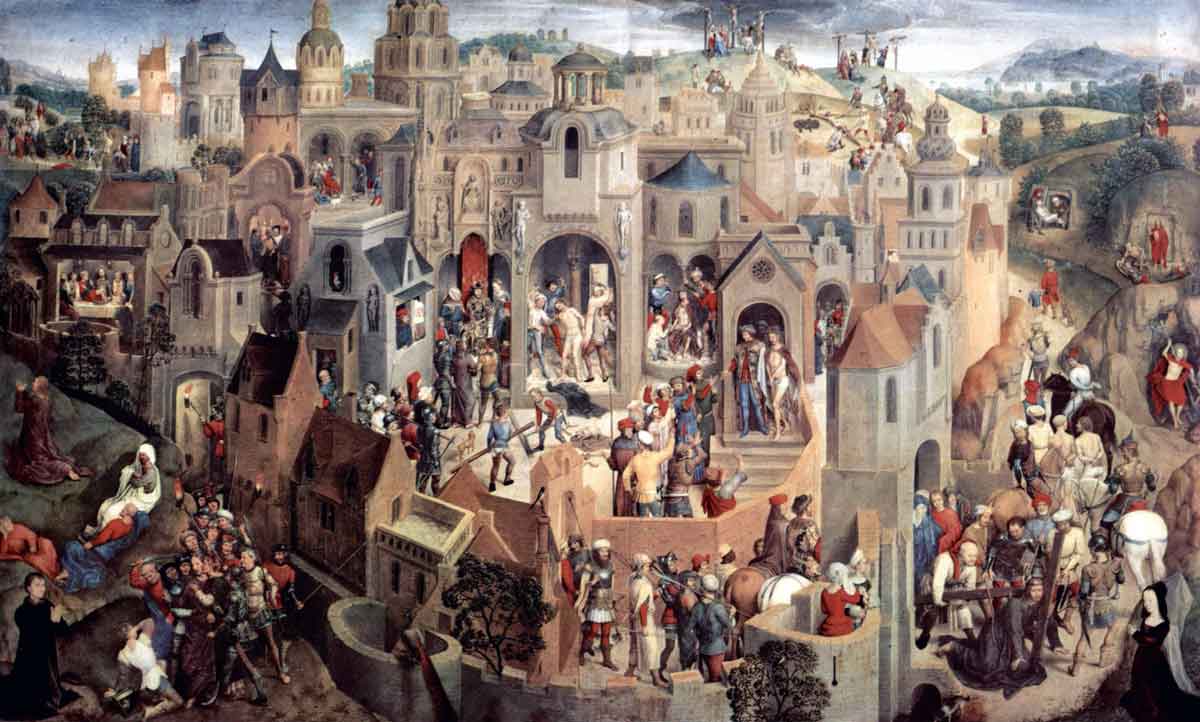The X-Files of the Church: Slaying Dragons, Resurrection from the dead, and George
Today is the feast of Saint George, who has a pedigree that will make your head spin with fascination and wonder. He isn’t known as a “wonder worker” per se, but he is attributed in various historical accounts as:
- slaying a dragon;
- having resurrected from the dead after having been slain for his conversion;
- coming to life again despite having been chopped up into little pieces and buried deep within the ground and burnt by fire (they really did things for certain back then);
- not just once did he resurrect, but was killed and resurrected three (3) times;
- other people came back to life to be baptized;
- wholesale conversions;
- the conversion of the Empress Alexandra;
- instantaneous destruction of idols and armies;
- that instead of bleeding when beheaded, milk poured forth (!);
- in 1161 (800 years after death) appearing personally in battle to help the Georgians throw off the Persians; and,
- around 1400, he and St. Paul appeared to help the Maltese battle against the Moors.
That list is only partial! But, it’s easy to see why St. George is one of my favorite X-File saints. Pope Gelasius, however, in 495 or so, definitely honored Saint George as a martyr and saint. He didn’t believe the accounts of his life however, commending George as someone “whose actions may only be known by God.”
I think the Pope was actually being diplomatic by punting on an active debate over whether St. George killed a live dragon or had slain the emperor Diocletian (who some called a dragon). I think it was a real dragon, myself – the devil changes his tactics with the times.
What the Pope was really doing under all that diplomacy was commending George as an actual martyr – a real saint. Thanks be to God, too, because some historians had tried to besmirch George’s fame by accusing him of being a charlatan. According to them, George was really the Arian bishop, George of Cappadocia (how is it the Gnostics love to feign themselves as real people?). Thanks to Pope Gelasius, we don’t have to worry about whether Saint George was real and really a saint – he was.
Instead, Gelasius left us with the fun of legends about George.
We’ll all know someday what the details and facts surrounding St. George’s life really were. I know for instance, that post-Charlemagne and post-battle of Hastings (which forever ruined the English language), the English took a strong fancy to George. They made up a lot of their own legends about him.
Prior to them, though, George has traditionally been reckoned on icons as a hero:
- riding the white horse;
- slaying the dragon;
- rescuing the maiden; and,
- helping the poor.
That works for me. The other stuff about rising from the dead is just extra.
In Troparia dedicated to St. George, he is attributed with these qualities:
- deliverer of captives
- defender of the poor
- physician for the sick
- protector of the king
- trophy-bearer
- great martyr
Now there is plenty of fodder here to find saint-making qualities. Paraphrasing the actual requirements (so no technical import here): A saint has to perform miracles and have a cult as well as a life of miraculous virtue.
Before turning to the likely truths of St. George’s life, there is one thing they leave out of the lists of him that is so important: George’s father was Greek (yeah, baby) (we’ll, his mother Polychronia was, too).
One more thing… I’m sure there are legends to support his being known as “physician of the sick” but I’m not sure about those (but if you know, put it in the comments, please).
Slaying The Dragon
There are so many versions to this part of George, that I will reiterate only the bare bones. A dragon near a city in Palestine (some say Libya) tormented the people and was so awful that even its breath would kill. The people attempted to sate the dragon by offering livestock. That only lasted so long, they ran out, and decided to draw lots for a person to be victim. The princess lost and went to be eaten. George, riding his horse sees her, asks her what she’s doing, and stays. The dragon eventually comes, and George makes the sign of the Cross. He kills the dragon and brings the maiden back to the village. The king tries to give George half of his kingdom, but George refuses and admonishes them to care for the poor and take care of the Churches of God there.
Martyrdom
This part of George’s life has little dispute. He really was of Greek parents living in Asia Minor and in Diocletian’s rule. George travelled to Nicomedia and joined the military. He quickly rose the ranks and before reaching 30 years old had become the Tribunus and stationed to the Imperial guard. (That’s sort of like becoming a general in the US and running the pentagon).
Then, the trial came. In 302, Diocletian ordered that all military be arrested and forced to offer a sacrifice to the Roman gods of time (coincidentally, George’s mother’s name, Polychronia, resolves to “many times”). George not only refused, he protested loudly. Everyone knew George would not honor the pagan gods.
Diocletian was up the creek because George was an excellent tribune and George’s dad was friends with Diocletian. Ultimately, Diocletian made a show of power and had George tortured on the wheel of swords (three times). Then, having survived, Diocletian ordered death to George and he was decapitated on April 23, 303. George was not done by death, though.
Diocletian’s wife, Alexandra and a pagan priest, Athanasius, were so moved by it all that they converted. As a result, they were executed, too (that’s how instant martyrdom is done).
Fame
One of my favorite things about George is that he had worldwide fame in the fourth century. There was no Internet or Facebook yet – there weren’t even any phones. But, even out in Georgia (the country, not the state) they were already venerating George and George’s cousin Nino who had brought the faith to them. He was kind of like an early St. Francis Xavier (who also went east and had worldwide fame and had his bones translated between churches).
Think about that: Georgia. And you always wondered how the country GEORGE-ia got it’s name, right?
The Great
With such a pedigree, it is easy to see how George is known as “the Great.”
How can you not love the way God makes it such that even in the legends of St. George, he is admired universally? Even if you don’t believe the legends, he existed and had such an impact on people around him that they followed him into death – he must have convinced them that Jesus’s promise that through Him, death is but a passage to life.
Personally, I think he did slay a real dragon. And I do look forward to hearing the rest of the story from him someday.
Do you?
This article, The X-Files of the Church: Slaying Dragons, Resurrection from the dead, and George is a post from The Bellarmine Forum.
https://bellarmineforum.org/the-x-files-of-the-church-slaying-dragons-resurrection-from-the-dead-and-george/
Do not repost the entire article without written permission. Reasonable excerpts may be reposted so long as it is linked to this page.


